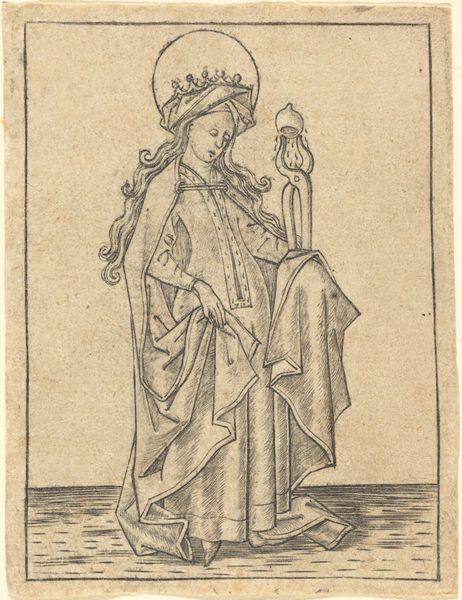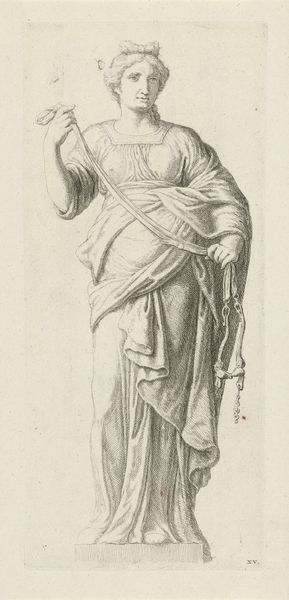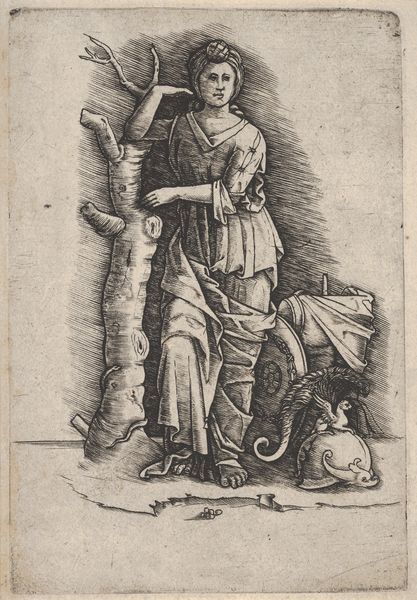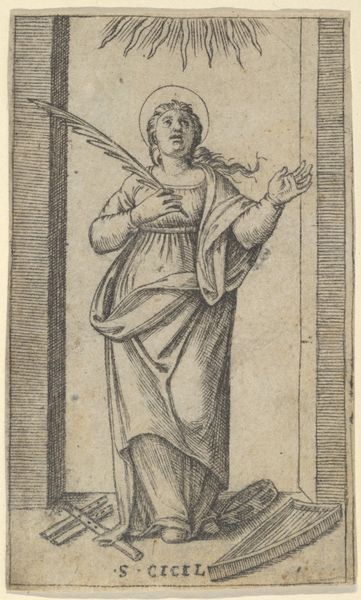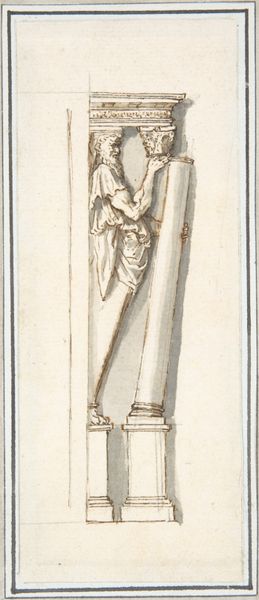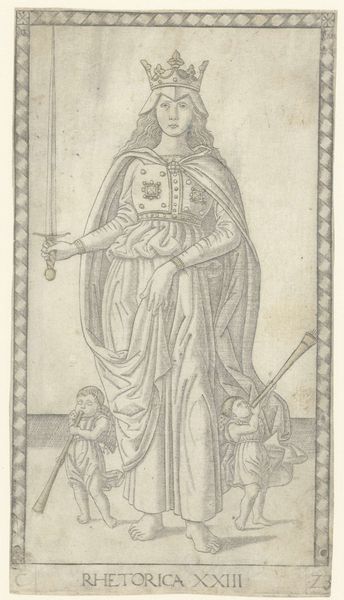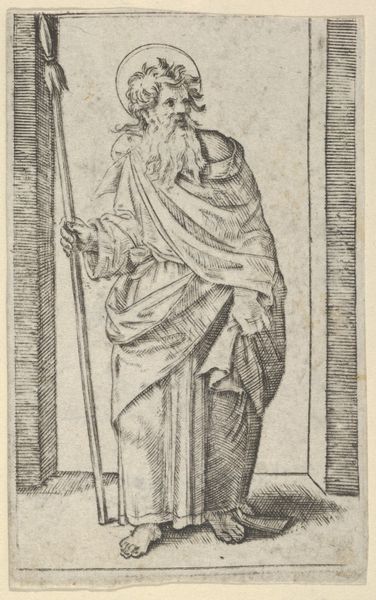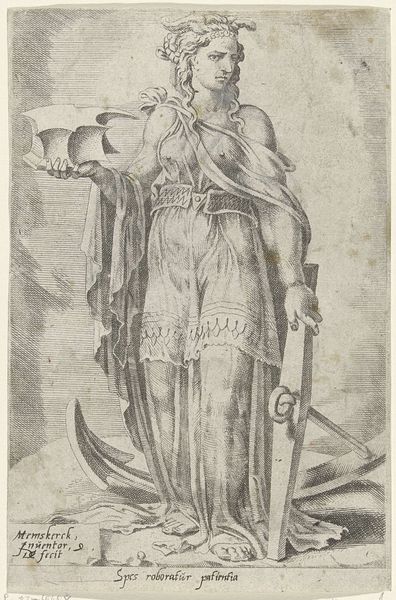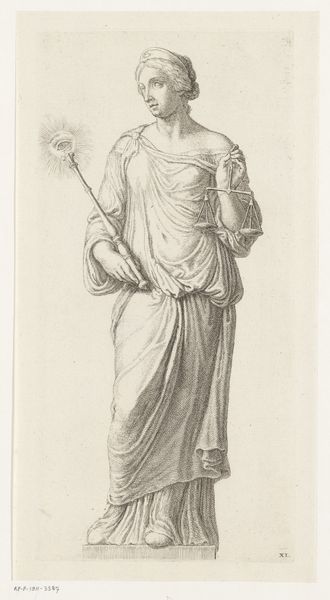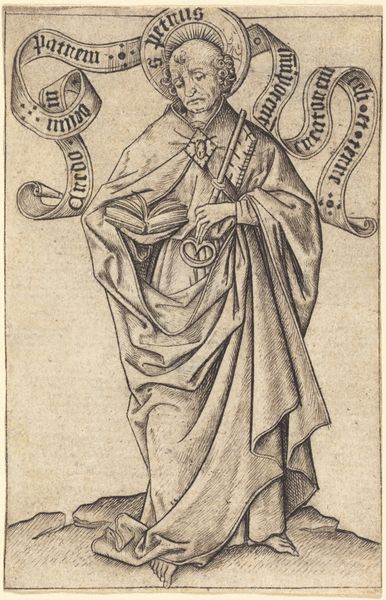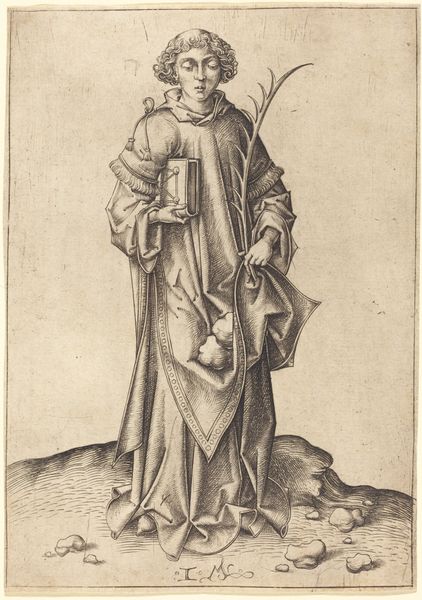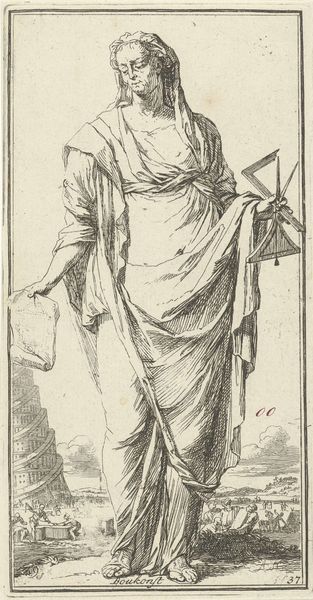
print, engraving
#
portrait
#
medieval
#
allegory
# print
#
old engraving style
#
figuration
#
line
#
portrait drawing
#
northern-renaissance
#
italy
#
engraving
Dimensions: 7 1/16 x 3 15/16 in. (17.94 x 10 cm) (image)
Copyright: Public Domain
Editor: This is "Justice," an engraving from around 1465 by an anonymous artist. It's currently held at the Minneapolis Institute of Art. It has a sort of severe and delicate feel to it all at once. What catches your eye when you look at this piece? Curator: I am immediately drawn to the method of its production, this painstaking act of engraving. Think of the labor involved, the deliberate marks creating this allegory of justice. This isn't just about high ideals, but about the material act of making meaning. What about the paper? Where was it sourced, who made it? Editor: That’s interesting. I hadn't considered the physical aspect so much. It just seems so… distant in time. Curator: Distance is precisely what this kind of analysis challenges! Look at the printmaking process itself. These images could be reproduced, disseminated widely. How does the shift from unique handmade images to easily produced copies democratize, or perhaps commodify, concepts like justice? Is the idea of justice also becoming something that's reproduced, consumed? Editor: So, it's not just about *what* is represented, but *how* it was made and spread. Like the means of production influencing the message. Curator: Precisely. And look at the way the figure is depicted: not idealized, but grounded. This reinforces a tangible connection between the abstract concept of justice and the very real material conditions in which it's created and administered. Editor: I see what you mean. The engraving allows wider access to this idea of Justice, but also makes us think about who controlled that access and how they chose to depict it in a tangible form. Thank you! Curator: Indeed, understanding art through its materials and production offers powerful insights into the values of a given time.
Comments
minneapolisinstituteofart almost 2 years ago
⋮
Some of the earliest Italian prints ever made, the Tarocchi resemble tarot cards in design but were actually too large to hold as a deck of cards. The so-called E-series engravings, with their lovely allegorical figures, are famed for their precise outlines and refined modeling technique. Justice belongs to the suit of Genii and Virtues. The sword signifies the power of Justice; the scales, her impartiality. The crane holding the stone represents vigilance because if it fell asleep the stone would drop and awaken it. Euterpe is from the Muses and Apollo suit. The patroness of flute music, Euterpe is accompanied by a blank disk representing the celestial sphere of the Ptolemaic universe.
Join the conversation
Join millions of artists and users on Artera today and experience the ultimate creative platform.
